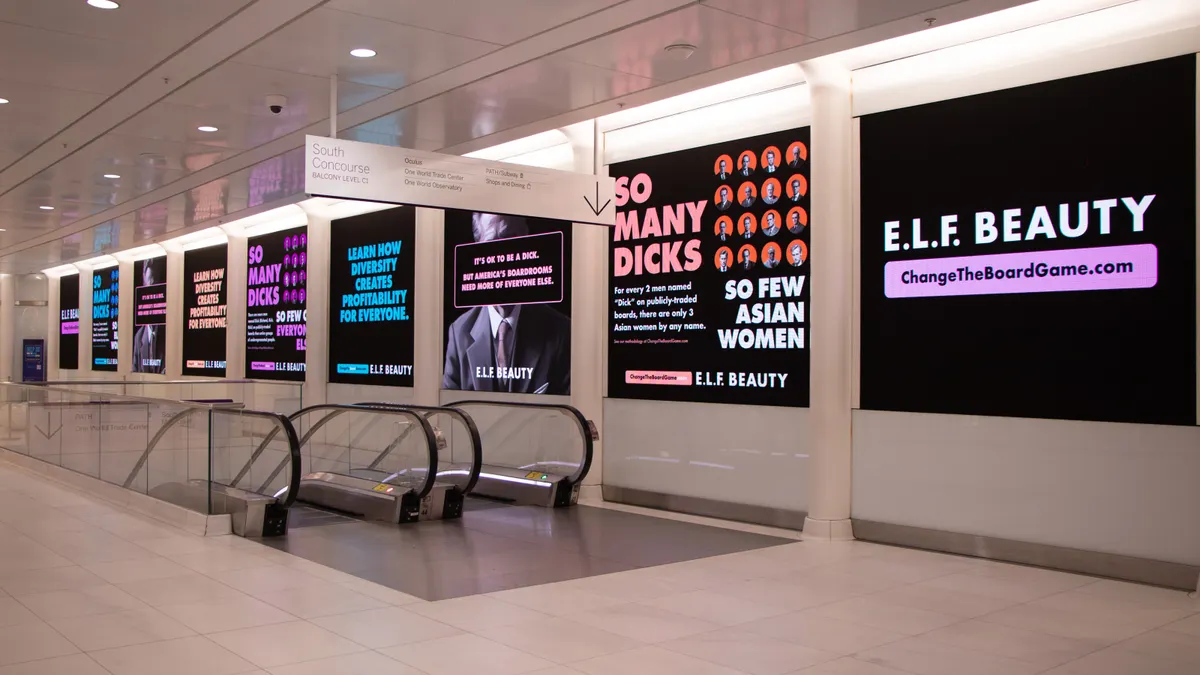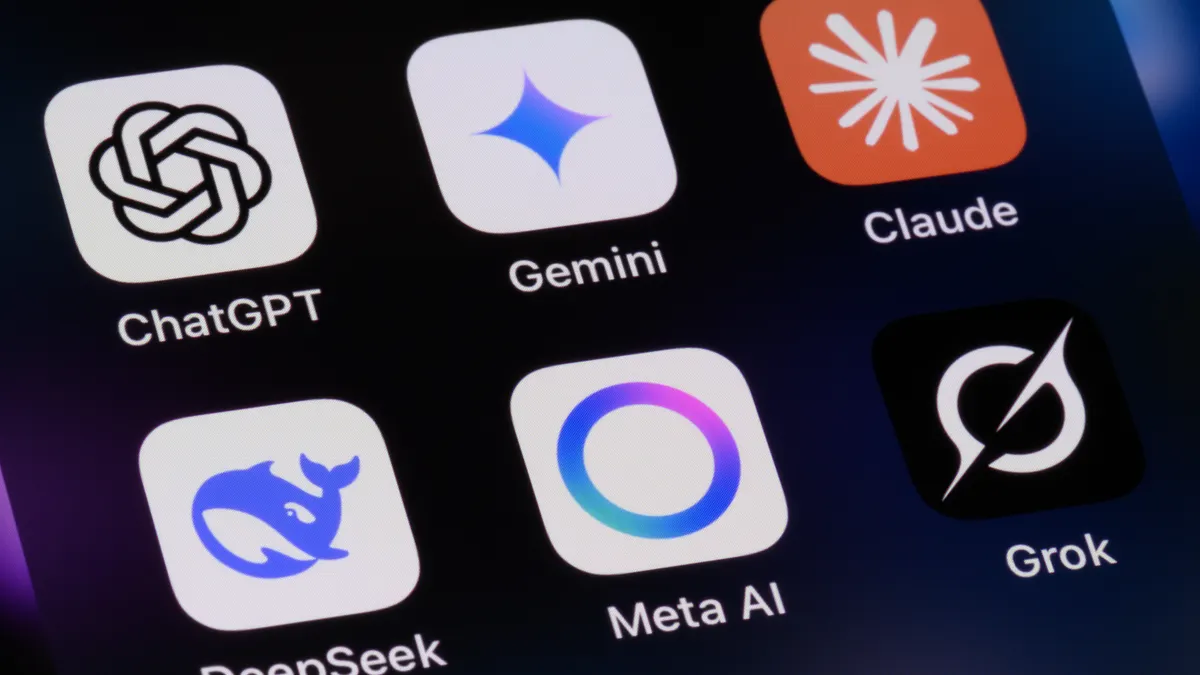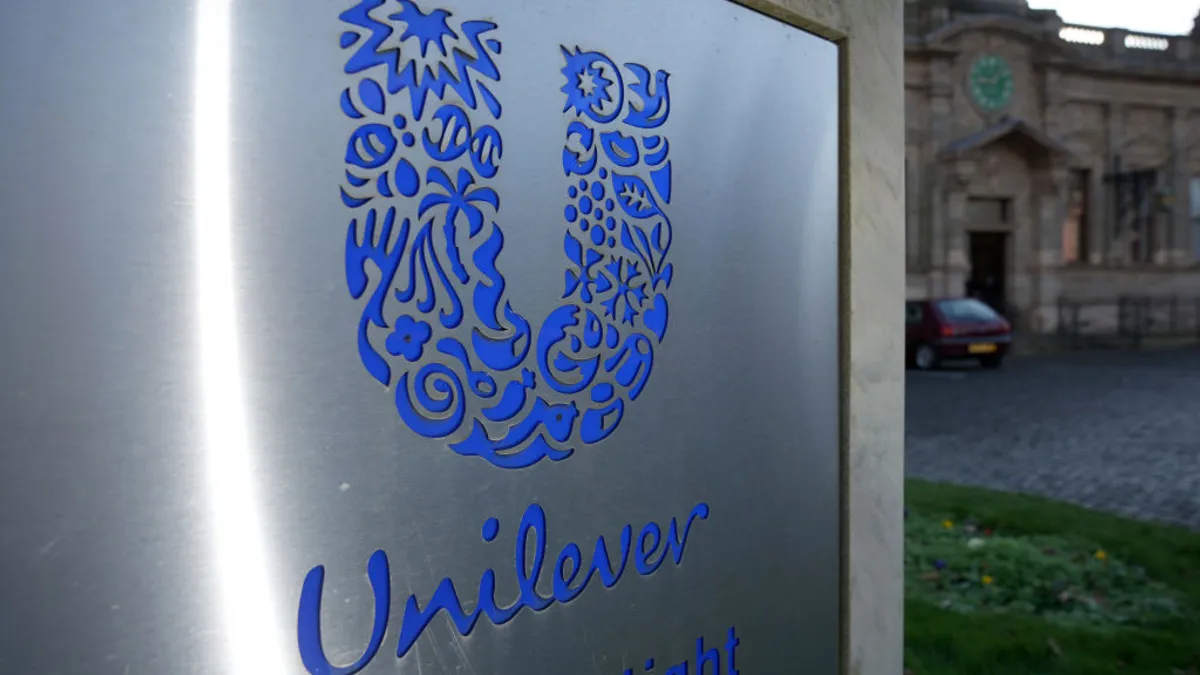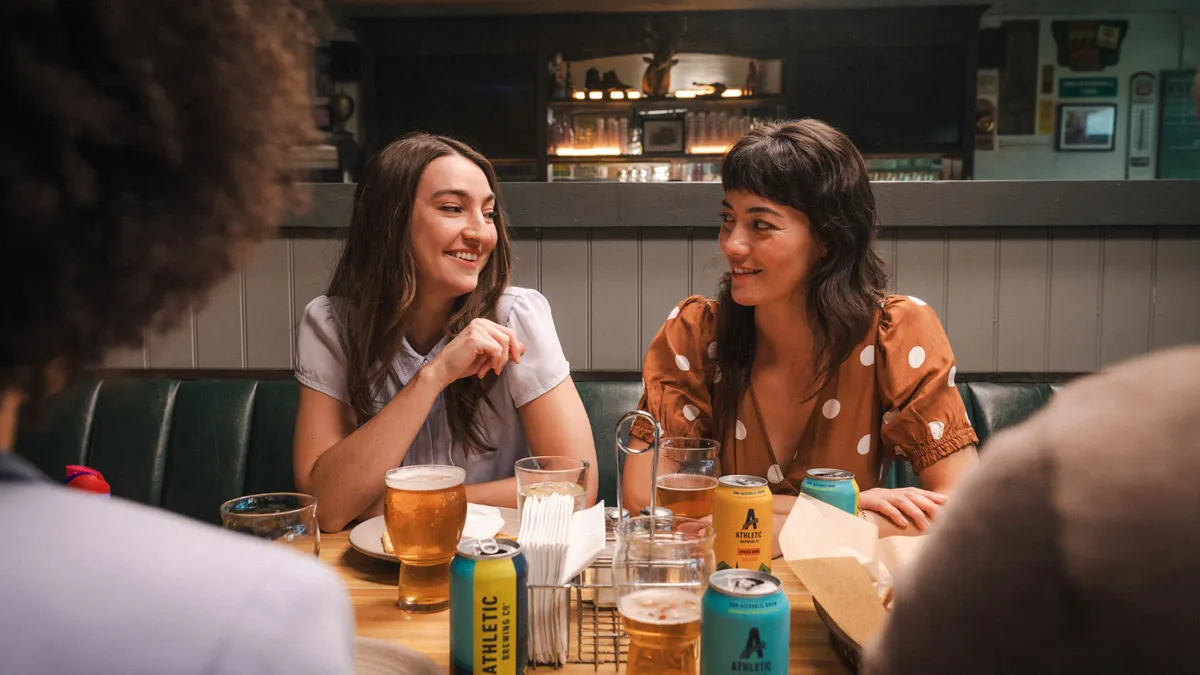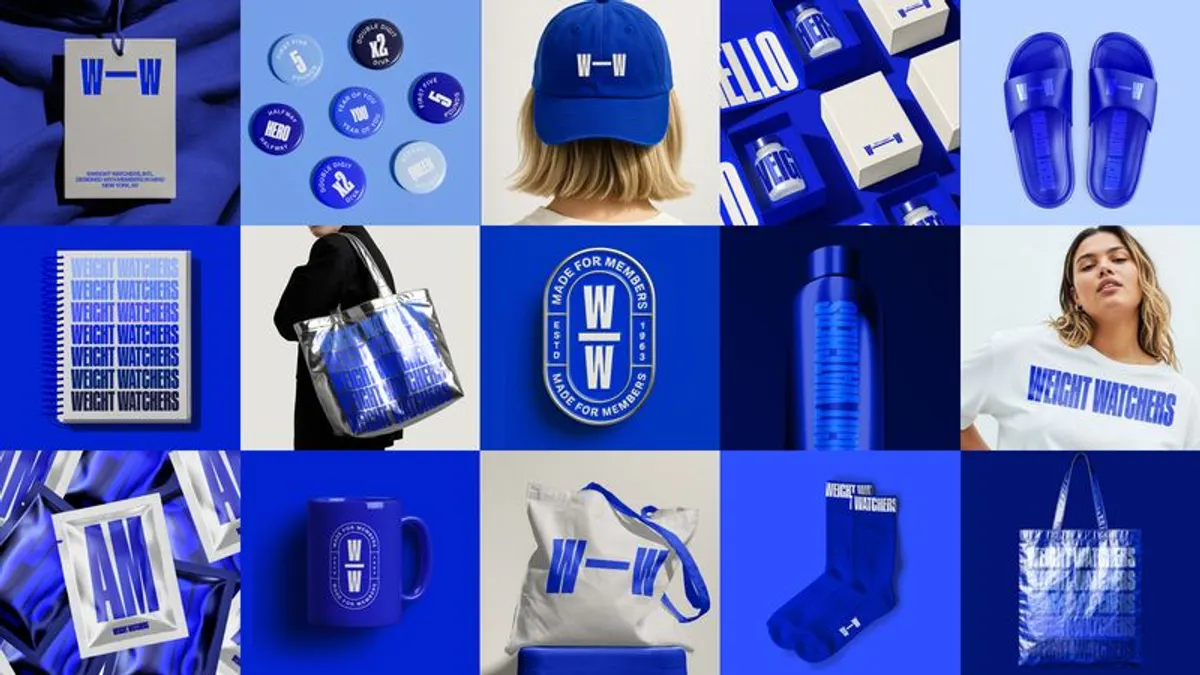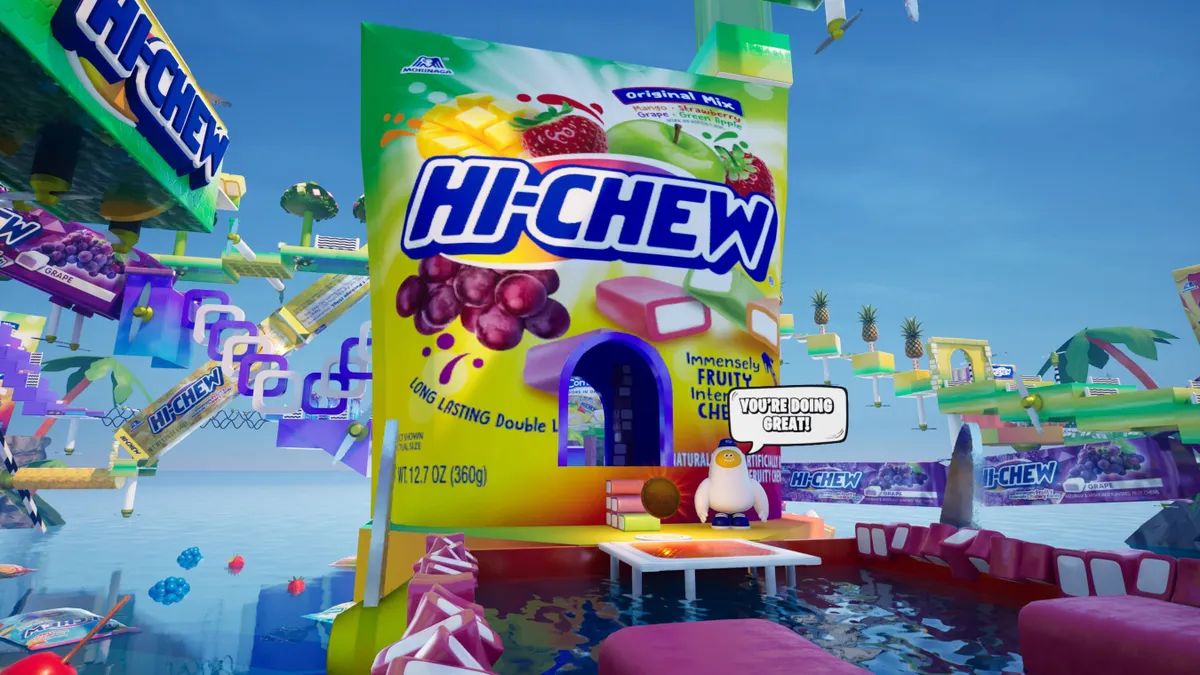Social media has been around for ages in marketing terms, but its current era feels like it started in the pandemic haze of 2020 with a TikTok video of a man sipping Ocean Spray while gliding along on a skateboard and listening to Fleetwood Mac’s “Dreams.” The blissful clip, later expanded into a TV campaign by the cranberry juice maker, led Ocean Spray to fly off of store shelves — and helped place “Dreams” back on the Billboard charts — while serving as an early indicator of TikTok’s distinct power in sparking viral product sensations.
Five years later, the “TikTokification” of media is mainstream and CPG brands are making a bigger pivot to the social-first model, with leading companies allocating up to half of their total ad budgets on the channel while dropping billions to acquire more nimble rivals. This escalation comes as the chase for Gen Z consumers intensifies and as marketers try to account for the further decline of linear TV, their lever for mass reach essentially since the living room screen’s inception.
“It’s largely to do with capturing the next generation and FOMO,” said Nick Valenti, CEO of agency Mādin, over email. “Gen Z no longer goes looking for information. It finds them through the feeds they live in. Social is where they form taste, trust and identity.”
Such moves represent more than a budgetary change, with a growing number of marketers seeking marketing services providers with deep knowledge of social and influencers, including through dedicated agency of record appointments and the establishment of new in-house units. The moment additionally bears an existential aspect: Can legacy CPGs, rooted in rigidly defined brand values and sometimes literally squeaky clean images, relinquish a sense of control as they face a fleet of ankle-biter upstarts built on the socially native approach?
“Every year, there’s more examples of success,” said Evan Horowitz, co-founder and CEO of the Movers+Shakers agency. “I think most brands can point to some indie competitors that are eating their lunch that really get social.”
Explaining CPG marketing's shift to social-first
Research emphasizes robust growth for social over time and, in recent years, a surge of interest in the algorithmically curated short-form video format popularized by TikTok. Total U.S. ad spending on social media was roughly $79.4 billion in 2024, according to WARC data, a more than 90% increase over 2020. That’s to say nothing of influencers, who have become top cultural tastemakers for Gen Z and, increasingly, brand entrepreneurs in their own right.
While social’s upward trajectory has been consistent, CPGs in 2025 are talking about the social-first mandate more publicly. Unilever, one of the largest players in the category, in March said it would shift half of its ad spend to social and multiply its work with influencers 20 fold in a bid to connect with global consumers at a more granular level.
“There are 19,000 zip codes in India. There are 5,764 municipalities in Brazil. I want one influencer in each of them,” said Unilever CEO Fernando Fernandez at the time, adding he will drive the initiative “like hell” from his new post.
The owner of Dove and Hellmann’s Mayonnaise increased its marketing investments in 2024 by roughly $1 billion, to its highest level in over a decade, providing a peek at what that type of spending hike could mean for social media and the creator economy at large. While other CPGs have not made announcements as dramatic as Unilever’s, the social-first trend is picking up steam elsewhere, in everything from “unhinged” meme pages to oddball product collaborations and flavor profiles that are designed to get people chattering online.
“I think most brands can point to some indie competitors that are eating their lunch that really get social.”

Evan Horowitz
CEO, Movers+Shakers
Those with deep enough pockets are also upgrading their social know-how through the brute force of dealmaking. Look no further than PepsiCo’s nearly $2 billion acquisition of prebiotic soda challenger Poppi or Unilever snapping up direct-to-consumer soapmaker Dr. Squatch for an estimated $1.5 billion. Announcing the deal earlier this summer, Unilever underscored Dr. Squatch’s “viral social-first marketing strategies, partnerships with influencers and celebrities and culturally-relevant collaborations.”
“The dynamic between brand control and creator authenticity has been completely reshaped by the success of challenger brands,” said Jason Weber, senior vice president of partnerships and head of sales at Open Influence, over email. “The model has been validated by major acquisitions in the space.”
Social-first strategies are about more than just spend
Mastering social-first marketing requires more than just shuffling some dollars around on a spreadsheet or buying a smaller competitor. Unilever has made other moves that indicate where the broader category could be heading in the social-first evolution.
In July, the company unveiled Sketch Pro, an in-house graphic design unit that aims to help home care brands like Persil pump out content at a faster clip with the aid of cutting-edge generative artificial intelligence (AI) technology from the likes of Google and Adobe. Sketch Pro, which was developed in collaboration with IPG Studios, is positioned as a shift from the “traditional, linear TV-first production to a social-first storytelling model” and recognizes how emergent AI software could further accelerate an already rapid pipeline for social content.
“YouTube is now the No. 1 TV viewing platform in the world at 12.5% share,” said Arthur Leopold, co-founder and CEO of Agentio. “What does that look like five years from now or even three years from now, especially when the cost to create content essentially goes to zero thanks to all these AI tools?”
Other brands are broadening their marketing services rosters to better specialize in the social arena. PepsiCo’s U.S. beverages division in June aligned its in-house agency closer to VaynerMedia to assist brands like Pepsi and Mountain Dew with staying “culturally fluent” across platforms. Pepsi’s share of the U.S. soda market has continued to slide, with Coke’s Sprite jumping to the No. 3 spot earlier this year, per Beverage Digest Data.
PepsiCo noted that “big brand moments” — i.e. traditional media campaigns — would still be handled by existing agency partners while the VaynerMedia tie-up is intended to support the always-on mindset that social demands.
Despite the top-level momentum, the journey to becoming social-first could be a long one for older CPGs, as agencies tend to bump up against the way they handle business in areas ranging from cost structure to creative production. Approvals can move at the glacial pace of traditional media, something that does not fly when the social trend machine moves on virtually overnight.
“There’s so much friction that’s part of the process,” said Leopold, whose company takes a programmatic approach to advertising around creator content. “It can take many months of back-and-forth negotiation for a single integration or post to go live, and because of that, the paid media team historically is never going to touch that.”
Challenges remain in brand reputation, 'elasticity'
Legacy CPG marketers also need to account for the gulf between the modernized image they think they’re projecting and the level of risk they’re actually willing to embrace, according to experts. Are they receptive to social-first marketing that rides the line of good taste or features innuendo? That riffs on gaffes by politicians or highly publicized hip-hop feuds? What about handing off the keys to content creators and influencers who court controversy? Those are questions that won’t be answered by simply dialing up ad spend.
“Putting the money there does not solve your organizational problems that keep you from doing good work,” said Movers+Shakers’ Horowitz. “There are so many brands right now that are spending a lot of money on media buys with Meta and TikTok, etc., that you can just look at their creative and say, ‘Wow, that was a big waste of money.’”
Some CPGs wield well-defined brand images that are adaptable to different channels. Procter & Gamble’s Old Spice has long leaned into absurdist humor that feels like a precursor to the current era of “brain rot” content while Unilever’s Dove has easily extended its “Real Beauty” platform to tackle the biases of social platforms that intensify unrealistic image standards for women. Dove earlier this year launched its first entirely creator-led marketing campaign, another sign of Fernandez’s social-first pledge in action.
“Where our industry gets in trouble is thinking everything needs to turn into a meme account.”

Nick Miaritis
Chief Client Officer, VaynerMedia
Other brands have less “elasticity,” Horowitz said, referencing a phrase used by executives at his agency’s client, E.l.f. Cosmetics. Particularly in fast-moving consumer goods, marketing frequently underscores qualities like product characteristics, dependability and value. Those don’t necessarily make for prime algorithm fodder and may require a CMO to apply more outside-the-box thinking.
“If you want your brand to show up differently, your brand has to show up differently. That is not easy for a legacy brand to swallow, and for good reason: They have a lot of equity, they have a diverse customer base, they want to protect that,” said Horowitz.
That said, some brands may have a wider sandbox to play in than they initially realize. Consumer preferences for nostalgia and recognizable assets like mascots remain high and provide avenues for bigger swings into social content.
Georgia-Pacific in May resurrected its Brawny Man paper towel mascot, outfitting him as a plaid shirt-wearing beefcake trying to acclimatize to the cultural context of TikTok get-ready-with-me videos and internet slang like “goblin mode.” The campaign carries perhaps an unintended meta aspect, as a brand established in the mid-70s tries to better ingrain itself in the smartphone age.
Pushing the envelope on humor can also pay off. VaynerMedia recently worked with MiraLax on a March Madness campaign that showed athlete ambassadors conquering pre-game gut problems. VaynerMedia has also generated attention for helping steer Clorox’s bolder social-first marketing tack.
“The Pine-Sol business at Clorox is different than the Brita business. Identify what that box is and then have freedom inside that box,” said VaynerMedia Chief Client Officer Nick Miaritis. “Where our industry gets in trouble is thinking everything needs to turn into a meme account.”
Lower guardrails and embrace change
Social in some ways offers fewer guarantees than the linear TV landscape upon which CPGs established their names through capital-A commercial advertising. Walled gardens are rampant and there is not a standardized measurement currency used by swaths of the industry. Content moderation continues to be a moving target, with more platforms adopting community notes-based policing.
“For legacy CPGs, the real risk is waiting."

Nick Valenti
CEO, Mādin
Social platforms are liable to undergo other changes, internal and external, that can set off shocks to brands and creators. YouTube or Instagram may decide a certain genre of content or video format is more monetizable on short notice. TikTok, which originated the Ocean Spray moment, is still faced with the possibility of a ban in the U.S., though the likelihood of that occurring drifts further away with each update from the Trump administration.
“Ultimately, it is still a risk for a classically trained CMO or CFO to move more money into marketing because the metrics, the creative guardrails, they are different and less developed than they have been,” said Horowitz of social. “This is a fundamental shift in how we think about creative as well as media.”
Making the leap to social-first now may still be the right move for CPGs, even with many of those guardrails a pipe dream. If category stalwarts like Unilever are racing to go all-in on social, the costs to stand out and degree of competitiveness are only sure to intensify down the road.
“For legacy CPGs, the real risk is waiting,” said Mādin’s Valenti. “Tools for measurement and brand safety help, but the deeper truth is behavioral: if you’re not where the next generation discovers meaning, you don’t exist to them.”
Informa, which owns a controlling stake in Informa TechTarget, the publisher behind Marketing Dive, is also invested in WARC. Informa has no influence over Marketing Dive’s coverage.




